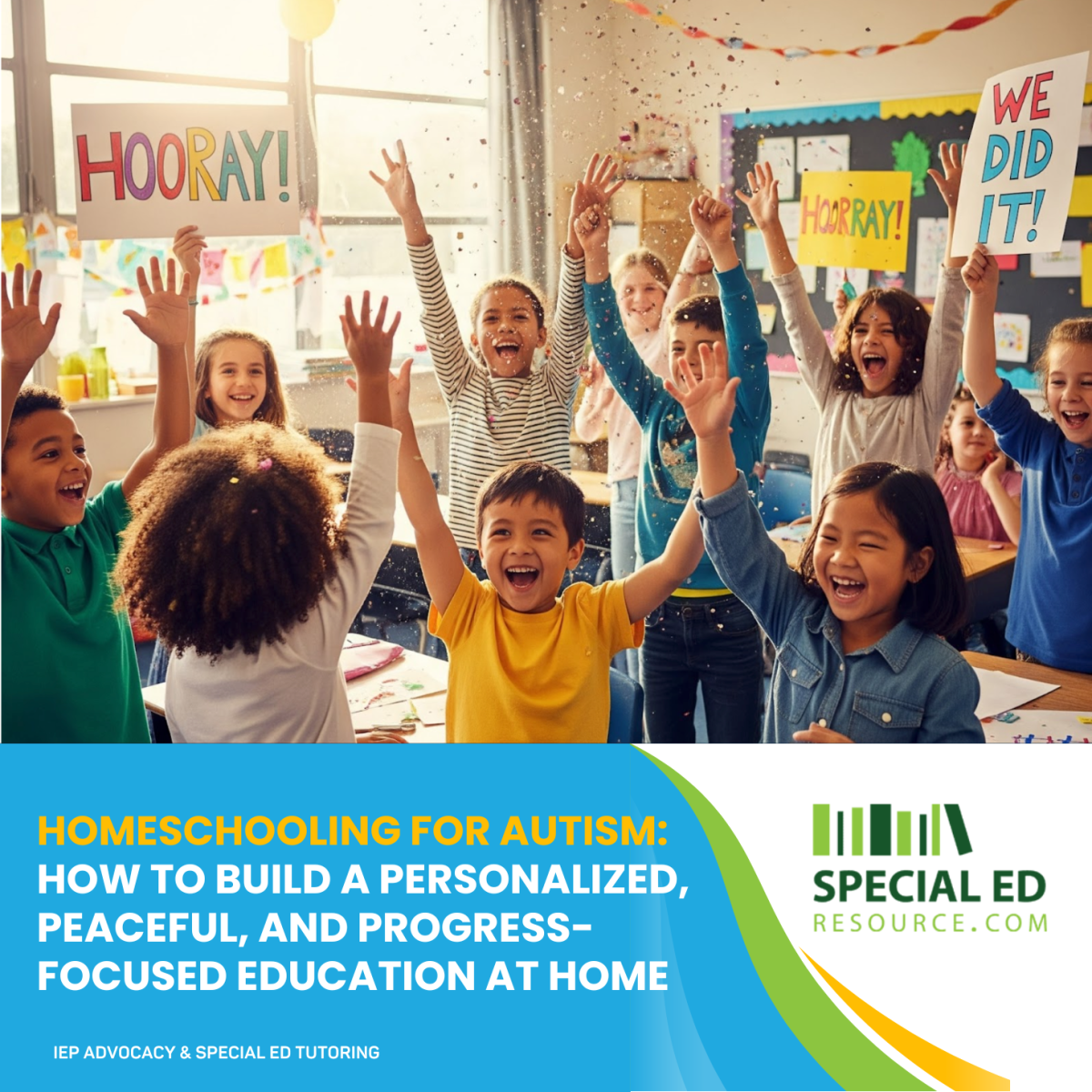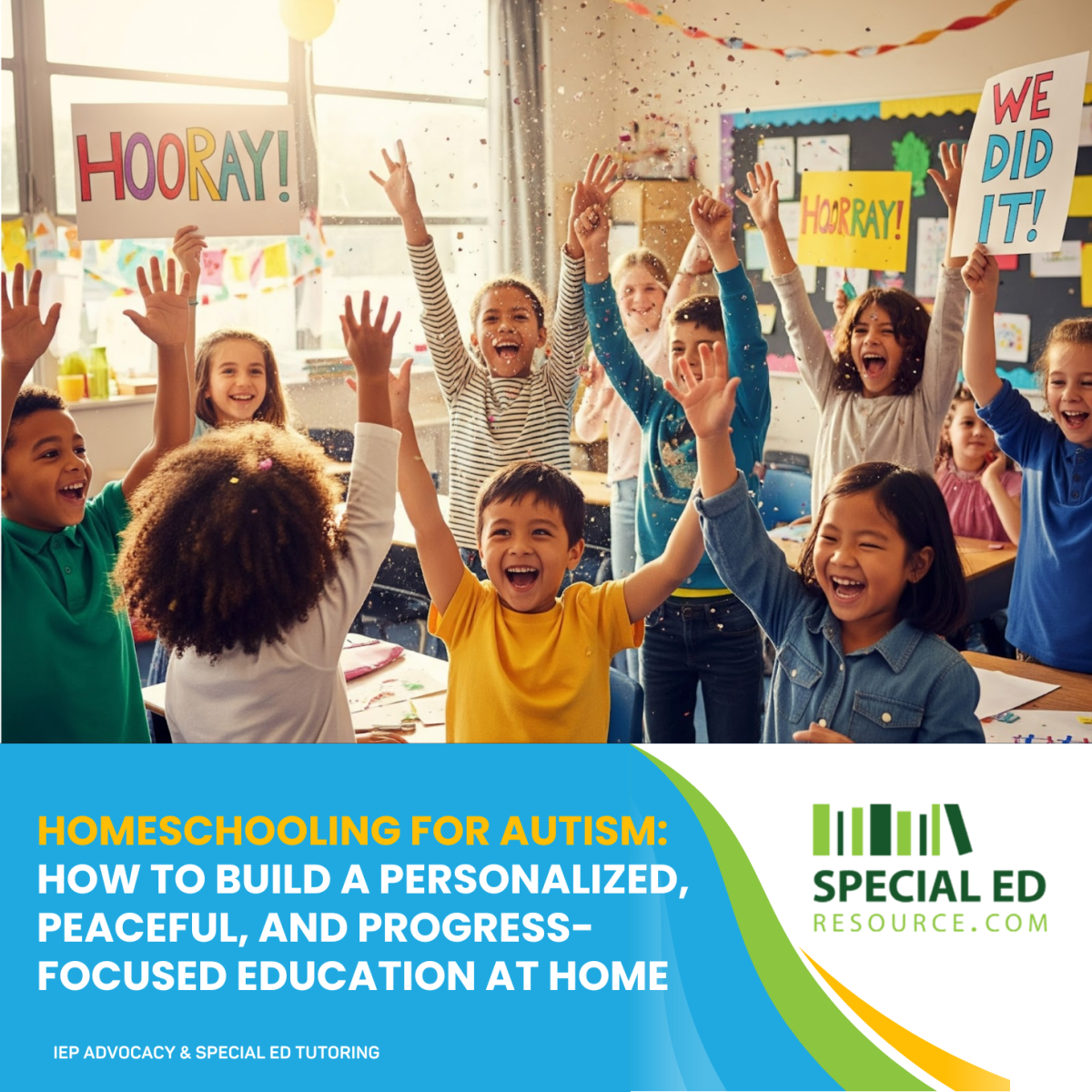Inclusive Classroom Celebrations: What to Ask, What to Bring, and How to Prepare Your Special Needs Child
Classroom celebrations should be joyful and inclusive – moments that bring students together, build community, and create memories. But for parents of children with special needs, even simple classroom parties can feel like walking into the unknown.
Questions arise: Will my child feel included? Are there sensory triggers? What if they don’t understand what’s happening or feel left out?
These concerns are real – and valid. With thoughtful preparation and open communication, parents and teachers can transform classroom celebrations into safe, meaningful experiences that reinforce both learning and social growth.
That’s the kind of support Special Education Resource helps families build every day – bridging home, school, and social settings so children with special needs can thrive in every environment.
Why Inclusive Celebrations Matter in Special Education
Celebrations are about more than cupcakes and decorations. They teach social skills, emotional regulation, and flexibility – all areas often linked to Individualized Education Program (IEP) goals.
When handled well, classroom parties help students with special needs practice:
Following group routines and transitions
Interacting with peers
Managing sensory input and emotions
Trying new foods or activities
Building confidence in social participation
However, when communication is lacking or environments are overstimulating, these same events can lead to overwhelm or exclusion. That’s why proactive planning is essential.
An inclusive celebration isn’t about limiting fun – it’s about expanding access to it.
Parents can start by learning what to ask teachers, what to bring, and how to prepare their child for success. For families who need extra guidance in creating supportive academic and social plans, professional special needs tutoring can help align home strategies with classroom goals.
Step 1: What to Ask the Teacher Before the Celebration
Preparation begins with information. Every classroom, teacher, and school handles celebrations differently, so asking the right questions sets the stage for inclusion.
Here are key questions parents can ask:
1. What kind of celebration is planned?
Is it a birthday, a seasonal event, or a reward day? Knowing the theme helps you predict what sensory experiences (like music, costumes, or food) might be involved.
2. What activities are planned?
Will there be games, crafts, or unstructured free time? Some students need advance notice of transitions or may require visual schedules to feel comfortable.
3. What foods or treats will be offered?
This question is essential for children with allergies, dietary needs, or feeding sensitivities. Offering safe alternatives ensures your child can fully participate.
4. How long will the event last?
Shorter celebrations may be easier for children who struggle with sensory overload or attention fatigue. Knowing the duration helps you plan strategies, like sensory breaks or quiet spaces.
5. How can my child participate meaningfully?
Ask if there’s a small role or task your child can take on – handing out napkins, helping with decorations, or reading a poem. Purposeful inclusion builds confidence and pride.
These conversations also open doors for collaboration. Teachers appreciate when parents approach inclusion as a team effort – proactive, not reactive.
For families who feel uncertain about how to advocate effectively in school settings, working with a special ed tutor or advocate can provide the language and confidence to communicate clearly with educators.
Step 2: What to Bring – Practical and Inclusive Ideas
When preparing for a classroom celebration, it’s helpful to think ahead about what items will make the experience smoother and more enjoyable for your child.
Here are ideas that support inclusion and reduce stress:
Comfort and Regulation Tools
Noise-canceling headphones for loud environments.
Weighted lap pad or fidget toy to support sensory regulation.
Small comfort object for reassurance if transitions are difficult.
Alternative Treats or Snacks
If your child has dietary restrictions or oral sensitivities, pack a preferred snack or treat that matches the celebration’s theme. For example:
Rice cakes with orange sprinkles for a Halloween party.
Gluten-free cupcakes for birthdays.
Smoothie pouches for students who prefer liquid textures.
Visual or Social Supports
Bring visual aids that help explain what’s happening – like a mini-picture schedule showing “Snack → Games → Crafts → Home.” This builds predictability and confidence.
Inclusive Gifts or Goodie Bags
If students exchange treats or toys, choose items everyone can enjoy, such as:
Stickers
Mini bubbles
Crayons or markers
Playdough (for sensory play)
Small adjustments like these make a big difference in helping every child feel included, respected, and valued.
Step 3: Preparing Your Child for the Celebration
Preparation is often the most important part of inclusion. When children know what to expect, they’re better equipped to enjoy the experience without anxiety or surprise.
Here’s how to help your child feel ready:
1. Talk About It Early
Discuss the celebration a few days ahead of time. Use simple, concrete language: “On Friday, your class will have a fall party. You’ll eat snacks, play games, and listen to music.”
2. Use Visuals or Social Stories
Create a short social story with pictures showing the event’s flow – entering the classroom, sitting with friends, eating, playing, and cleaning up. This helps with sequencing and emotional readiness.
3. Practice New Skills at Home
If your child struggles with group games or taking turns, role-play those activities in advance. Practicing familiarizes them with expectations in a safe, supportive setting.
4. Discuss Sensory Strategies
If noise or texture might be an issue, review what tools are available: “If it gets too loud, you can wear your headphones or ask for a break.”
5. Celebrate Small Wins
After the event, talk about what went well. Positive reinforcement helps build resilience for future experiences.
These techniques help parents reinforce social-emotional and behavioral goals often included in IEPs. For students receiving tutoring through Special Education Resource, these celebrations are used as real-world learning moments that strengthen communication and adaptability.
Step 4: Working with the Classroom Community
Inclusion doesn’t just happen – it’s built. Parents, teachers, and classmates all play a role in creating an environment where every student can celebrate comfortably.
Teachers:
Encourage flexibility. Some students may need modified schedules or sensory-friendly activities. Even small changes – like dimmer lighting or shorter game times – can make a huge difference.
Parents:
Model understanding and advocacy. Communicate with teachers early and share helpful strategies that work at home.
Classmates:
When peers learn about differences in ability and communication, empathy grows. Classroom discussions about inclusion (in age-appropriate ways) teach compassion and kindness – lessons that last long beyond the party.
Celebrations become opportunities for connection instead of comparison.
Step 5: Using Classroom Celebrations to Reinforce Learning Goals
Parties and events aren’t just social experiences – they’re learning opportunities.
Here’s how they can connect directly to IEP or tutoring goals:
Math skills: Counting snacks or supplies.
Reading comprehension: Following a recipe or instruction card.
Fine motor practice: Cutting paper pumpkins or stringing beads.
Speech and language: Asking peers questions or sharing stories.
Social skills: Waiting in line, sharing materials, or expressing gratitude.
Each of these moments reinforces classroom learning in a fun, low-stakes way. Experienced special education tutors use these real-world opportunities to track and strengthen academic progress.
Families can find more ideas for reinforcing learning goals beyond the classroom at Special Education Resource.
About Special Education Resource
Special Education Resource has been transforming the way families approach special education across the United States. Founded by Luke and his wife after navigating the challenges of the IEP system with their own children, the company was built from compassion, understanding, and a relentless commitment to student success.
Their team of special education tutors helps children overcome learning barriers with precision – identifying the true causes of struggle, then using targeted instruction to dissolve them. With one-on-one and small-group tutoring options, families can access expert support tailored to their child’s unique needs.
Whether helping students master academic skills or preparing them for real-world experiences like classroom celebrations, Special Education Resource remains dedicated to creating progress that lasts.





